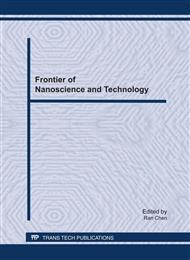p.375
p.380
p.385
p.391
p.396
p.399
p.403
p.408
p.413
Spectroscopic Investigated to the Interaction of Human Serum Albumin with Fluorescence Carbon Nanoparticles
Abstract:
The interaction of SiO2 including carbon nanoparticles (CNPs) with human serum albumin (HSA) in vitro under simulated physiological conditions has been studied by fluorescence methods and dynamic light scattering (DLS). Experimental results indicated that SiO2 including CNPs can be stabilized in the physiological environment and emit fluorescence, which quench HSA fluorescence by a static quenching mechanism. Our findings indicate that understanding the interaction between proteins and carbon nanoparticles is crucial for toxicological studies.
Info:
Periodical:
Pages:
396-398
Citation:
Online since:
July 2011
Authors:
Keywords:
Price:
Сopyright:
© 2011 Trans Tech Publications Ltd. All Rights Reserved
Share:
Citation:


